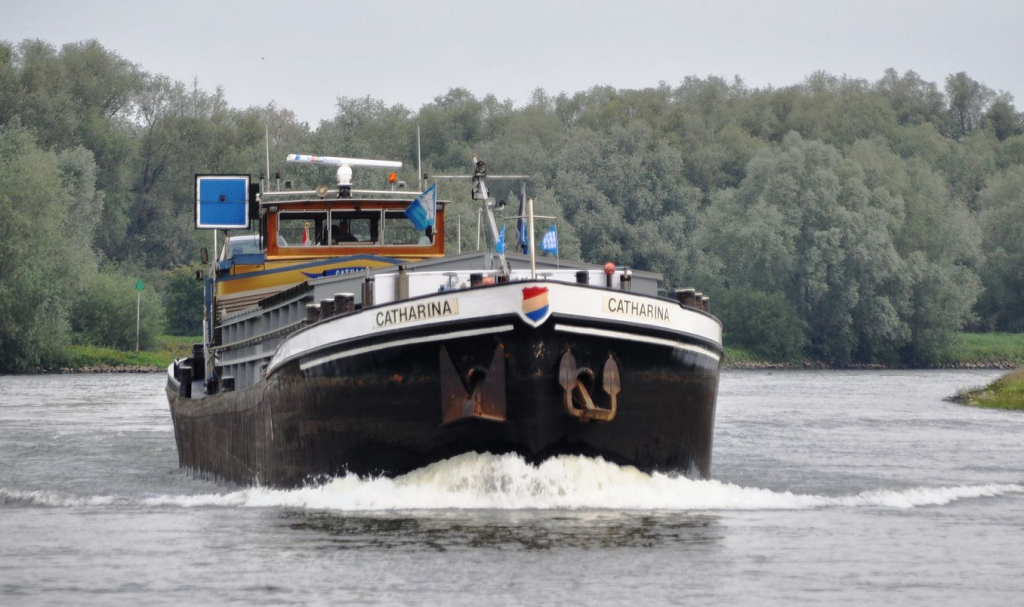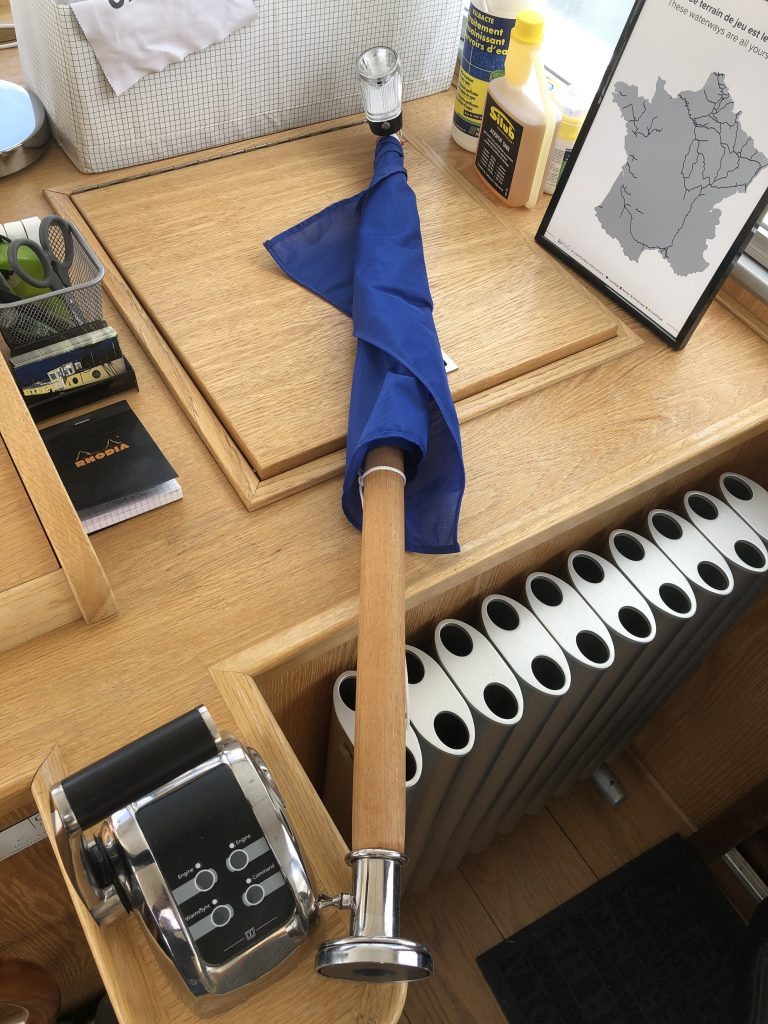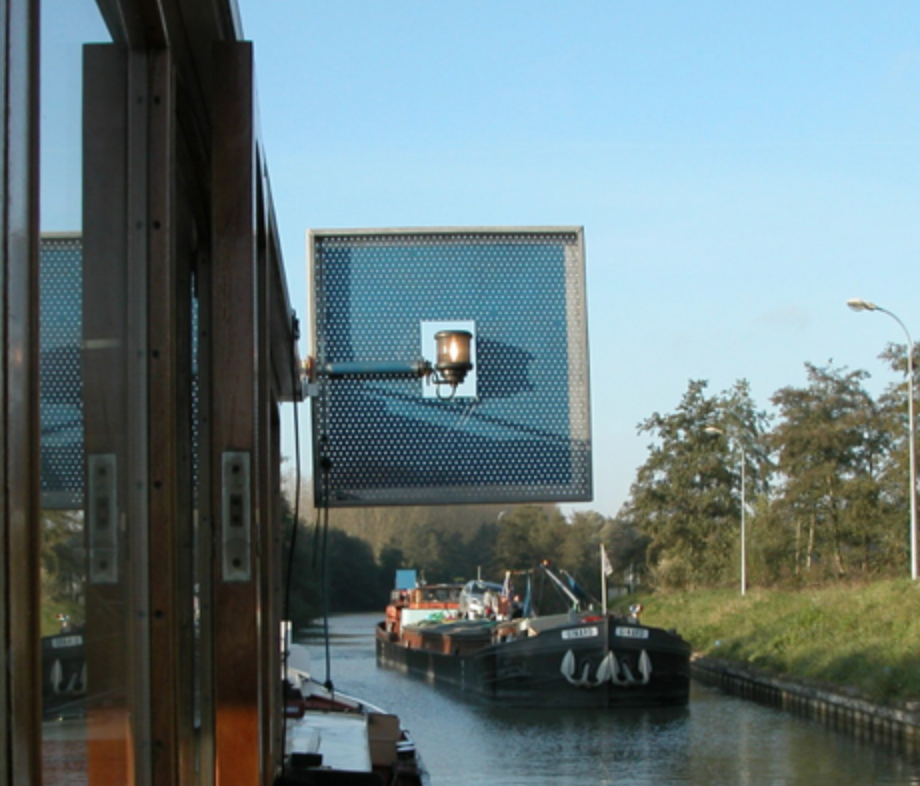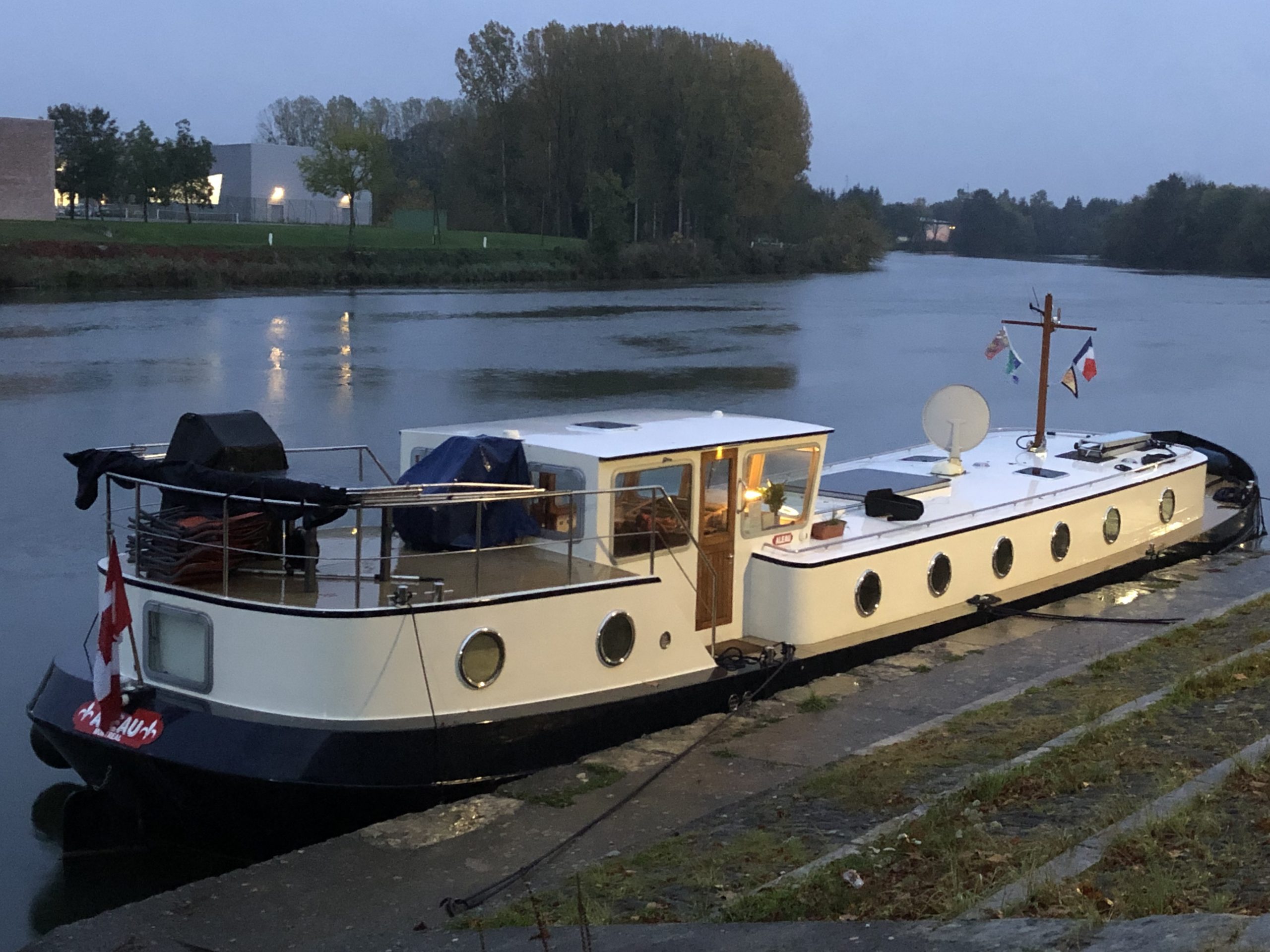CEVNI rules state that any vessel 20-metres or longer must be equipped with a Blue Board with a flashing white light.

In earlier days, this was a Blue Flag. Being just eight-inches short of being legally required to have a blue board, I decided that courtesy and safety meant we should at least have a blue flag (with a flashing, white bicycle-light) at our disposal.

Vessels traveling downstream (almost) always have priority over vessels going upstream. A vessel heading downstream is being pushed by the current. Steering, slowing, or stopping is more difficult. Even when almost stopped (vs. the bank alongside the river), a vessel heading upstream still has water flowing past the rudder to aid in steering and the throttle can be used to keep the barge stationary compared to the bank. It makes sense to give the downstream vessel priority.
Like almost everything in life, there is an exception. Normally, oncoming vessels pass each other port to port – as with cars in most of the world. But when approaching a bend to the left, an upstream boat has the right to cross the channel and pass a downstream vessel starboard to starboard. The current on the outside of a bend is always faster than the current on the inside of a bend. A heavily laden barge may already be struggling against the current. Forcing it into an even stronger current on the outside of the bend may be just too much to handle.
The upstream vessel has the right to display a blue board. This indicates to the oncoming downstream vessel that the one going upstream intends to cross in front of the downstream boat and pass it on its starboard side. The downstream boat acknowledges the upstream boat by displaying its board.

Normally, the blue board is not visible to oncoming vessels. It lies flat and is only raised when the upstream boat wishes to cross the channel in order to pass starboard to starboard.

While we would never initiate Blue Boarding (and legally can’t), we do carry a blue flag. If we ever encounter a large commercial displaying a blue board, we would be able to respond with our flag – demonstrating to the helm of the commercial that we have seen his blue board, that we know what it means, and that we will respond by moving to the other side of the channel. I think this not only shows a courtesy to other users of the waterways but makes things safer both for us and other vessels.
I should point out that Blue Flagging is a CEVNI regulation and exists only on the inland waterways of Europe. It does not exist across the Channel in the UK – or anywhere else in the world. As mentioned earlier, the waterways of Europe are often very narrow and are the most congested in the world. Blue Boarding makes things here a bit safer.
